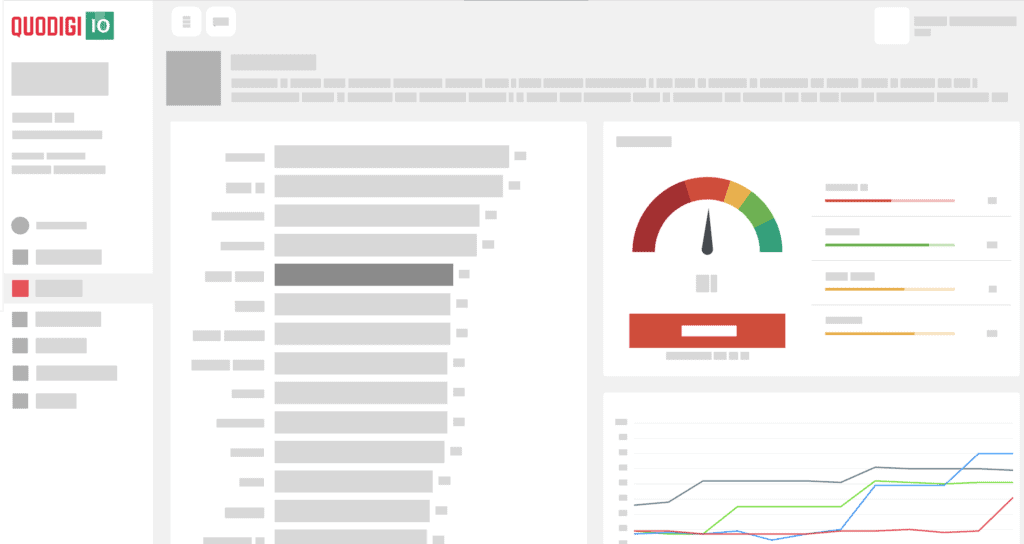There is a very intimate correlation between the figure of the architect and that of the digital architect. In a time of great social transformation, the need to train a new class of professionals, that of digital architects, is becoming a requirement rather than a suggestion. And the educational ecosystem to make it a reality does not yet exist.
There is a strong national and international gap between demand and supply in professions related to digital and technology. It is estimated that in the United States alone in 2030, there will be 8 million job vacancies and that1 the 65% of current students will take on jobs that don't exist today.2
The driving force is the digital transformation that has been taking place in recent decades, which is changing entire industries and entire classes of professionals. The figure of the architect, for example, is one that thanks to the digital revolution has undergone, and will continue to undergo, major transformations.3.
In my dissertation, I was thinking about this very subject.4: that of the figure of the architect, its evolution and possible professional implications in a new place, that of digital design (and of the bit) as well as of the analogue one (and of the brick).
New time is a reality; it exists regardless of whether we accept or reject it. It is neither better nor worse than any other time, it is simply a fact and is in itself indifferent to values. What matters is not the "what" but only the "how".5
The quote, in spite of what it might seem, is from 1930. And it is coined by Mies Van Der Rohe, a very important and influential architect for the stylistic definition of the modernist movement in architecture6. If it is the how, and not the what, that is important, the figure of the architect is fully entitled to explore new social and economic possibilities thanks to the internet. On the internet and for the internet.
Does making architecture relate to making a website? What's the difference between designing a building, a stool or a website, and an urban plan or the complex architecture of a digital project?
In the most intimate sense of designing, probably, none.

Why should architects get involved in digital design?
Anna Cicognani, in her article architectural design for online environments identifies several reasons why architects should also deal with web design:
They are familiar with the organisation of space; they are aware of the relationship between efficiency and organisation of space; they have a good understanding of the design process and its stages of negotiation and execution; they are used to transforming basic material into functional elements (such as wood/chair, brick/wall).7
Thanks to computerization, today architects can use the computer not only as a mere drawing board, but also to develop a simulation of the project in all its forms: from the aesthetic one (with realistic 2d/3d simulations of the building or even of the graphic design), to the technical one (let's imagine the simulation of a load-bearing structure) or the computational one (the management of the costs in relation to the project) and all this within their electronic work sheet. (spreadsheet) which allows the management and synchronization of all these different mathematical relations: "a reality of interactivity is now allowed by many CAAD (Computer Aided Architectural Design) programs that have an integrated spreadsheet. In this case the graphic information (the dimensions of an environment, for example) are read and automatically inserted in a spreadsheet which, for example, describes a complex cost-benefit model. At this point the simulation logic makes, as should be clear, a decisive leap (modifying the graph affects the mathematical model and all its interconnections)."8
The possibilities that the architect has today in the field of design, thanks to technology and its very varied preparation, have thus exponentially increased. Proof of this is the progress in design made over the last half century, which has seen computerisation become the new means by which design is developed. And I'm not necessarily writing about those related to building design, but also computer science and even more so the web.
If it is true that architecture responds to a need, and the architect is the figure that transforms analogically starting from a space and materials (example brick in the house), it is also true that the computer responds to the same need: the creation of another type of "house" (the website) starting from a web space with digital materials made available.
And like real space, virtual space must also be designed. So a professional figure is outlined that is the sum of the two parts, which at the moment are very distant in terms of preparation and goals. A real contamination that also responds to the economic crisis of the construction industry in this historical period: the figure of the web architect.
From analogue to digital design
It is possible to catch a parallelism between the idea of design, construction and digital, showing that these worlds are not so far apart.

Sharil Tumin, University of Bergen and Sylvia Encheva, Stord/Haugesund University College were among the first professors to analyze the problem with an academic eye. In their article A Brief Look at Web Architecting, which is reproposed in its fundamental passages draws attention to this very point:
The process, called, web design has never been as important as it is now. There is a major shift in development efforts from computer software applications to Web-based applications throughout the ICT (Information Communication Technology) world, sectors ranging from large corporations to governments to education. The main reason behind this change is the mobility of workforces and the dispersion of users over different geographic areas and time zones.
The Web, since its inception 30 years ago, has been based on the principles of openness, distributed control and accountability, freedom to collaborate, and mobility. It is no surprise that the Web is successful because the principles that underline its design, development, and distribution are all inherently humanitarian principles.
The trend in the sale of personal computer units shows a clear trend towards mobility. The sale of tablets/smartphones and laptops has overtaken that of stationary units. The Web is providing, supporting and encouraging anytime, anywhere work and play habits. This is what consumers want and what technology offers. Mobile units are becoming more portable, powerful, usable, accessible and affordable.
In the last two decades, observers can verify the rapid development of both server and client side software of web technologies. Different development tools, deployment platforms and server-side frameworks, accompanied by many powerful client-side Web browsers are supporting today's Web businesses. Many Web applications are designed and developed tailored on tablets and smartphones to enable greater reach for users and thus business for the companies that produce them. […]
The ITC architect is a new professional figure emerged to fill the gaps in responsibility between management and engineering, strategic requirements and functional deployment, user expectations (the user experience) [...].
In other words, web architects have the task of making the hard choices in view of the realization of a future Web system that can satisfy all known and unknown needs presented by the manager, developers, engineers and users.
Architects are the ones who must have knowledge in both vertical and horizontal aspects of a proposed system [...].
While engineers are more focused on physical and material constraints, architects at the other end of the scale are more interested in business and social constraints. However, both, architects and engineers, must be interested in the economic and ecological aspects of ongoing web projects. In addition, the project being implemented must be compliant for the ecosystem and distribution arena, which in our case the World Wide Web. […]
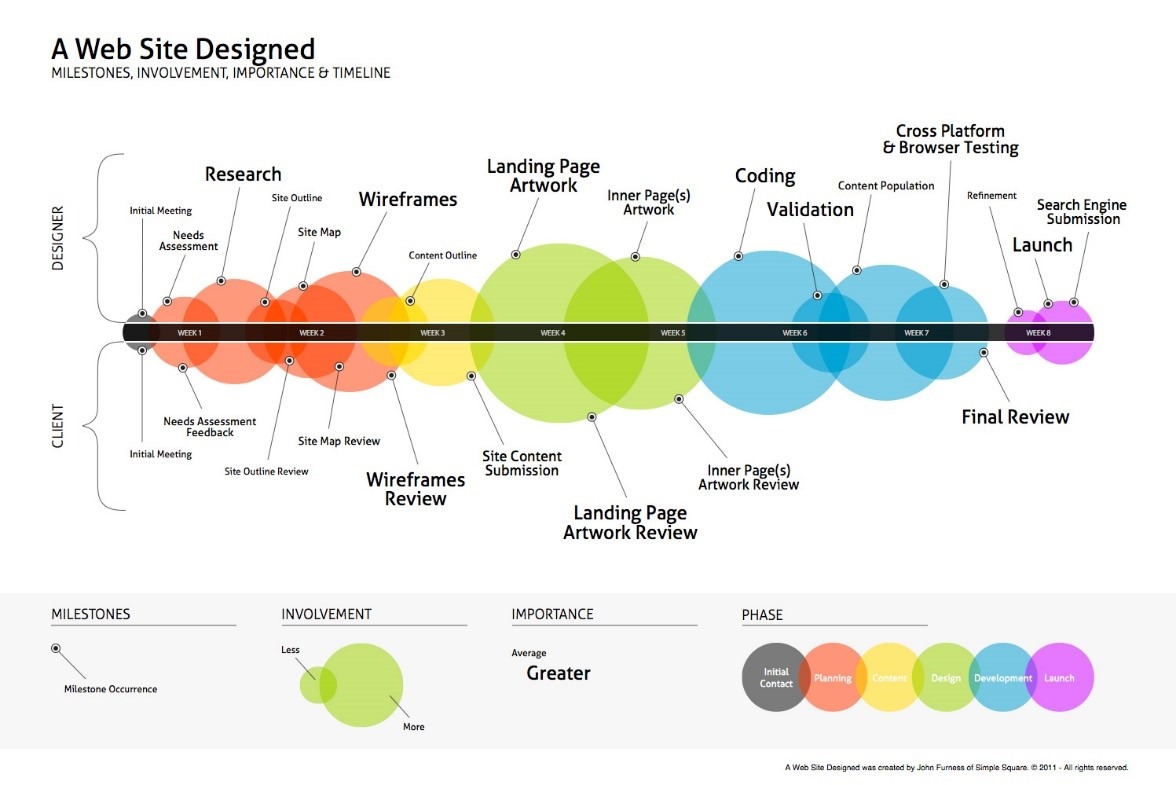
The definition of a digital architect (or web architect)
We could define Web Architect that figure in the middle that makes the bridge between vertical and horizontal needs, governing them. Just as in building architecture, that figure that on the one hand coordinates the efforts in the definition and development of the project with suppliers and on the other fulfills the strategic needs of the customer. But not all that glitters is gold.
The real problem is that the computer scientist knows little about architecture and the architect little about computer science. The architect should contaminate himself more with the computer scientist. And push for the creation of this contaminated professional figure that lives and designs multi-dimensionally. That's why you can call them digital architects or web architects. But the substance does not change: a new professional figure intimately linked to that of the traditional architect.
Returning to the article A Brief Look at Web Architecting:
We have some familiarity with the term Web Engineering, but not with the term Web Architect. The reason may be that the division of responsibilities between engineers and architects are not as clear in ITC as they are in the world of traditional construction and contractors. Software developers are designing software while architects are interested in building physical objects.
Traditionally a software house produces software as products to be sold to consumers. This software is purchased and owned by users. Thanks to the market trend in the shift from stand-alone to mobile, the so-called cloud computing, the software is purchased as a service also known as SaaS (Software as a Service). In cloud computing all software, applications and data are stored and managed by some service providers reachable through known URLs (Uniform Resource Locator) accessible by users located anywhere in the world, at any time of the day and the only requirement is Internet connections. A SaaS is typically deployed as a combination of Web-based applications and Web-based services.
Web architecture is a subset of Software architecture. Although a subset, Web systems are as complex as any stand-alone software system, and in some cases can be more complex as demonstrated by some of today's Web systems. The work of software architects and Web architects are similar, the different is that the development and deployment of Web applications works in a different and broader field than stand-alone software installed on a computer. [...] Another crucial difference between a software project and a Web project is that the goal of a software project is to develop software while a Web project aims to provide a Web service.
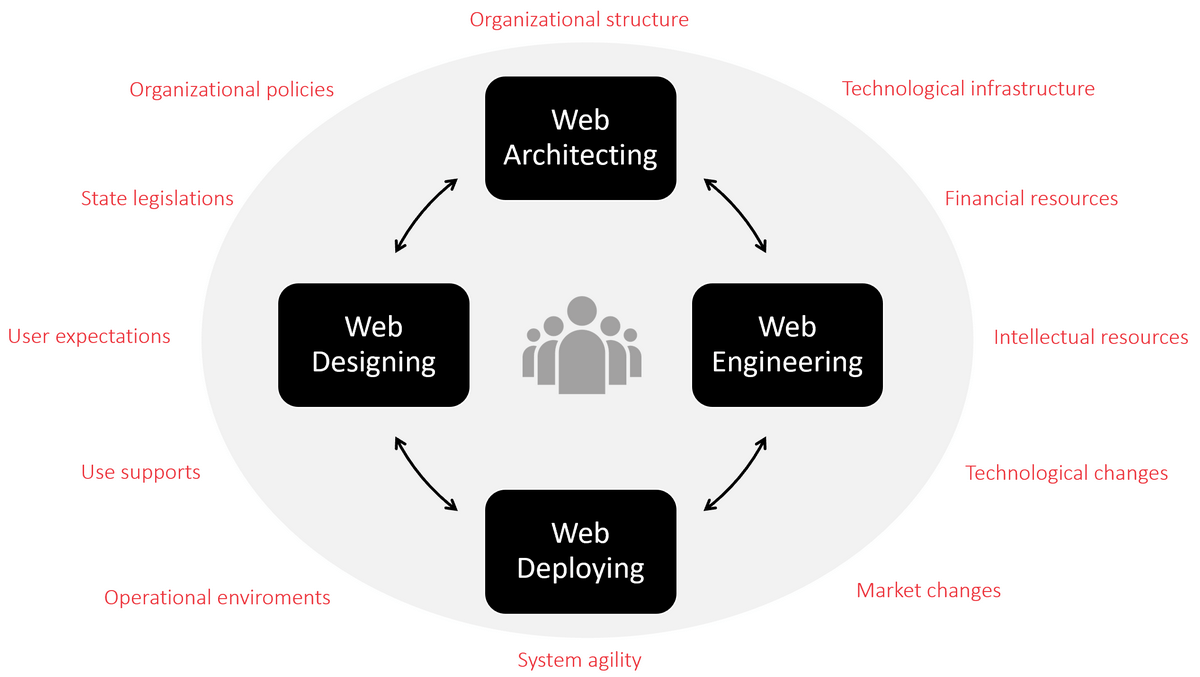
[...] Taken as a role, a Web architect can also be a group of people with the experience and skills needed to carry out a specific Web project as shown in Figure. Group memberships are not necessarily static [...]
The graph in the next figure shows a competence curve for a work project in relation to the activities illustrated above:
1) managerial (Y-axis), and 2) technological (X-axis) in different phases; 1) Initial Study Requirements, 2) Requirements Design, and 3) Development and Deployment, within a project and with different types of activities; 1) Web architecting, 2) Web design, 3) Web Engineering, and 4) Web Deployment.
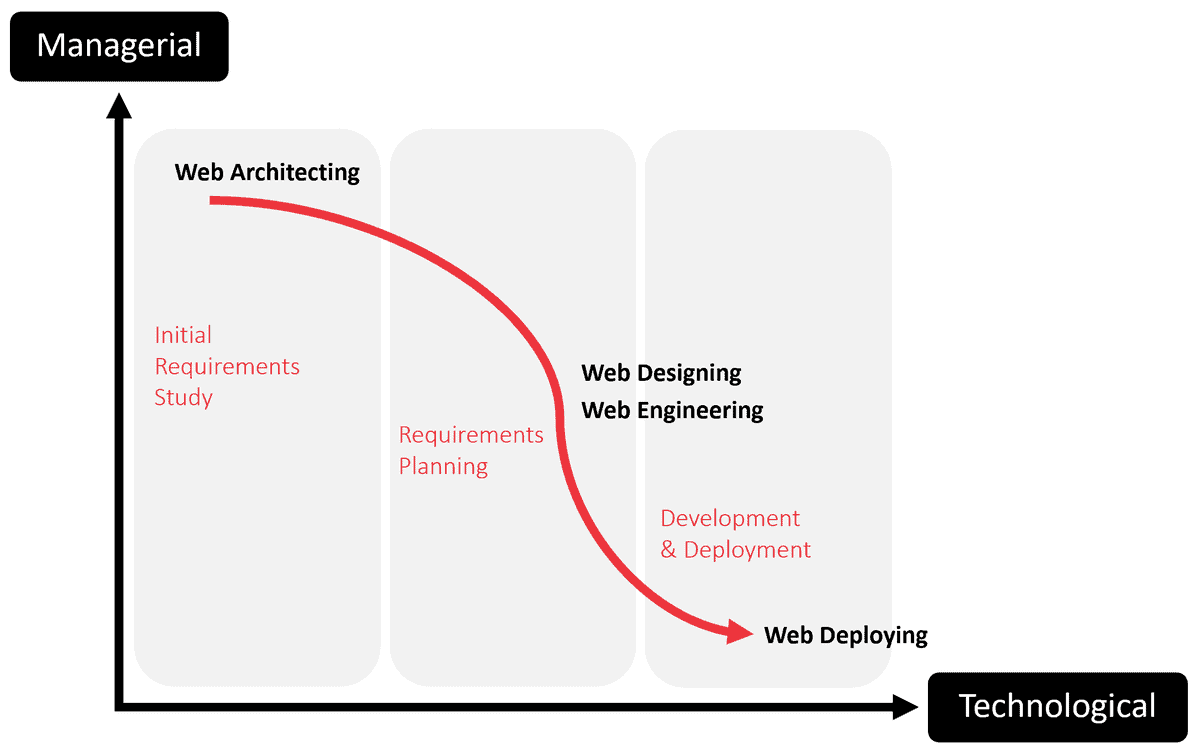
[...] Three basic observations can be easily seen in the image namely; 1) managerial expertise decreases, while technological expertise increases; 2) the architect's group starts their work in the initial requirements phase of the study and ends their work in the next phase of Needs Planning; 3) there is a significant decrease in managerial involvement some where in the next phase of Needs Planning. The model shown in Figure is simplistic and intuitive. Typically, in a project start, more managerial competent people are needed while managerial of expertise are no longer important at the next stage and at this time group members are predominantly technology experts [...]
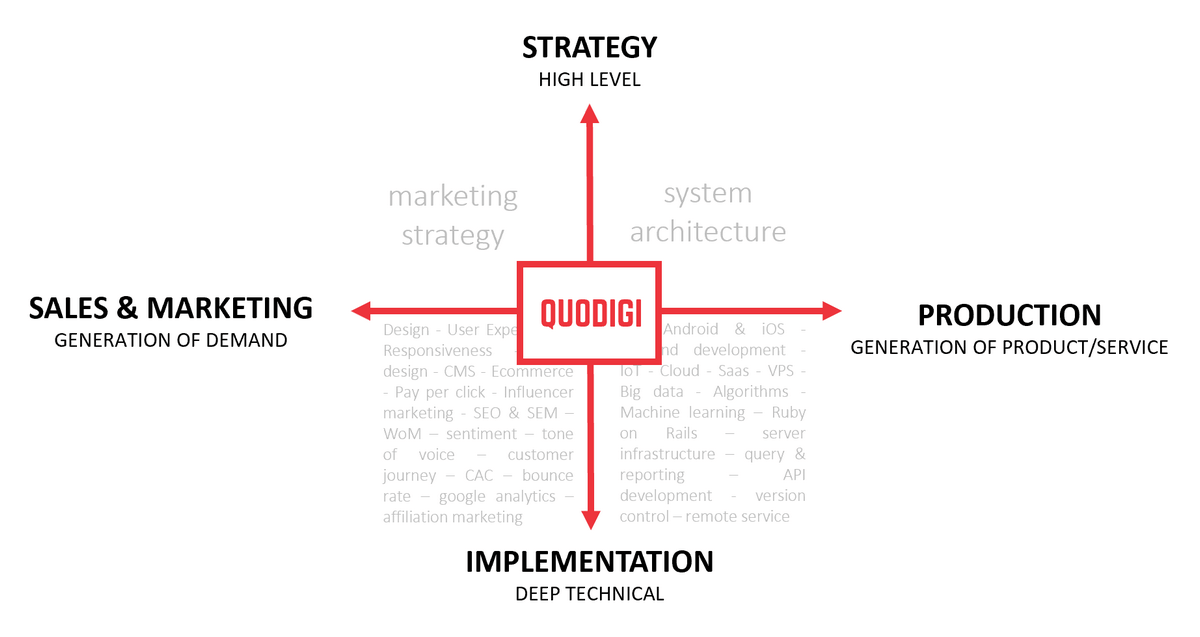
IT work habits are changing. The current and likely future trend is the total assertion of mobile technologies. [...] These small, lightweight devices will have their programs, applications, and ability to store data elsewhere, in the clouds of the Internet. […]
The Web Architect has the important responsibility of ensuring the success of a Web project by 1) translating needs into implementable and concrete solutions, 2) finding a synthesis between financial and intellectual capital, and 3) trying to plan the distribution of resources in a way that satisfies the underlying needs. [...] and the attributes of: (1) usability, (2) performance, (3) scalability, (4) reliability, (5) availability, (6) extensibility, (7) maintainability, (8) manageability, and (9) reliability and security. At the design stage, these attributes can only be used as guidelines for drafting the required operational constraints and objectives. They can only be quantified after the system is installed, and some measures of direct or indirect relevance to these attributes are taken during online deployment. To meet the requirements, the production system must be changed and tuned [...].
The job of web architecting is to bridge the top-down strategic and business requirements with the bottom-up technical constraints of web designers and web developers. Web architecture is the bridge that closes the cultural gap between two important groups in an organization. 9
The future is here.
The world of work is the representation of the distance between supply and demand in the digital & technology sector. Training generally tends more and more to create vertical professionals who are experts in their own field (web developers, designers, marketers, project managers, etc.) and who communicate little with each other and fewer figures with a more transversal vision and connection.
This gap is growing all the time10 and behind this phenomenon there are various and complex reasons. However, I will focus on one of them, which is certainly at the root: the near non-existence of a hybrid educational ecosystem. That embraces and espouses digital in its most general sense and even more generally forms hybrid professionals between social, business and technical aspects.
To recap:
- Our liquid society11 continues to change and within 10 years there will be jobs that do not exist today. Digital and technology are driving this transformation not only in business, but also in society.
- The figure of the architect and his academic background are ideal to play the role of digital architect (or web architect).
- The digital architect is that person (or group of people) who acts as a bridge between horizontal and vertical (business, social and technical) needs in project development. Just like the traditional architect.
- There is no strong ecosystem for the development of this new professional figure and in parallel there are huge business needs, in view of digital transformation, that require it.
The faculty of architecture, according to the writer, can only be the ideal candidate for this transformation, and architects (or should I call them digital architects) the promoters of a new place to design and connect. What we hope is that one day there will be flowers of architects who, in addition to seeing the internet as a space to find new customers, will design from a UX interface, to a strategic digital marketing plan to the architecture of a complex technological project, governing and supporting the process between all parties involved. From ideation to grounding: bringing their own (architectural) preparation and tuning it, synthesizing it in the digital world. Tuning different worlds. Different spaces.

